Budgies are one of the smallest and most famous members of the parrot family. Therefore, the budgie anatomy is one of the most studied topics in the bird’s world.
Budgie breeders and fanciers studied the budgie anatomy heavily to describe the mutations and quality of mutations. Especially, they studied the external organs such as feathers, wings, heads, etc.
Scientists also studied the internal organs of budgies. Of course, budgie breeders did not pay much attention to the internal organs.
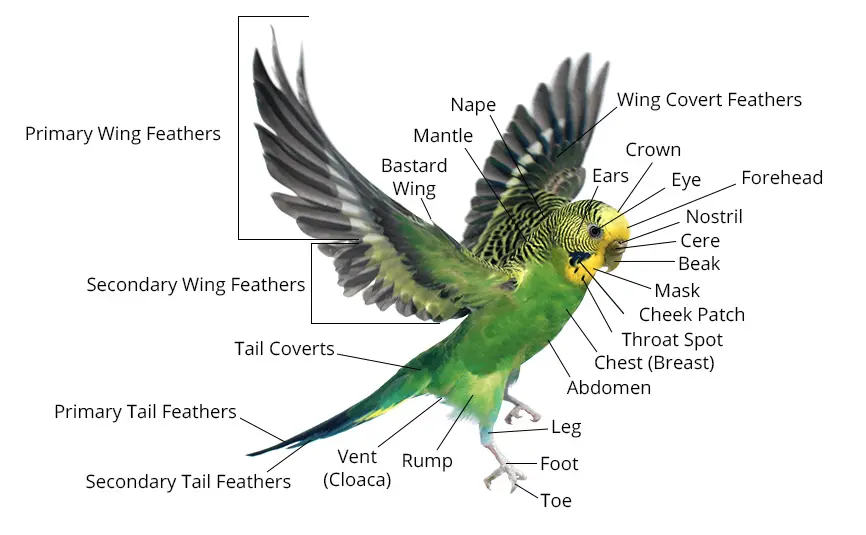
In addition, male, female, baby, English, and wild budgies have the same anatomic features.
Skeleton
The skeleton of budgies is quite fragile.
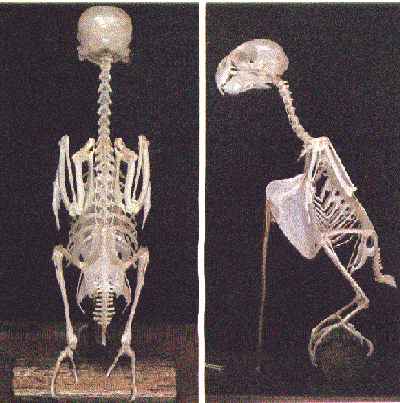
Budgie Beak (Mouth) Anatomy
The beak of the budgies consists of two parts, the upper mandible, and the lower mandible.
Budgies can move the upper part of the beak. But they can’t move the lower part of the beak.
Budgie beaks are made of keratin. Besides, they have blood vessels inside the keratin structure. As a result, they can feel physical touches and the heat of the air. When we consider these features, we can say that budgie beaks are similar to the nails of people.
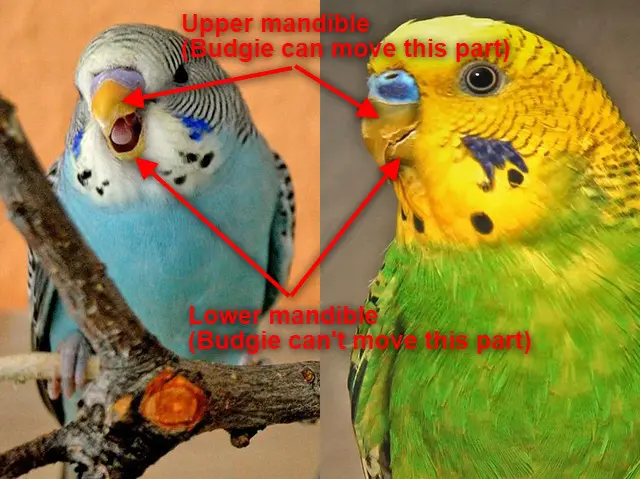
Cere
Cere is located on top of the beak’s upper part (mandible). It consists of the skin, and it is sensitive to hormones.
![Budgie Anatomy [All Body Parts]](https://www.petiska.com/wp-content/uploads/2022/06/budgie-anatomy-all-body-parts-1654515324.jpg)
The color and surface area of the budgie’s cere change depending on health, whether it is in breeding season or not, and sex.
Out of the breeding seasons, a normal female budgie has white and tones close to white, while a male budgie has purple and blue color cere.
During the breeding seasons, a female budgie has a tan (brown) colored cere with a crusty surface. Besides, the male budgie has a darker purple and darker blue with a polished surface.
Cheek patches
Cheek patches are located under the eyes and at the level of the beak. Budgie’s cheeks can be white, gray, violet, blue, or pale blue. They also can be a mixture of these colors.
Many budgie mutations modify the color of the cheek patches.
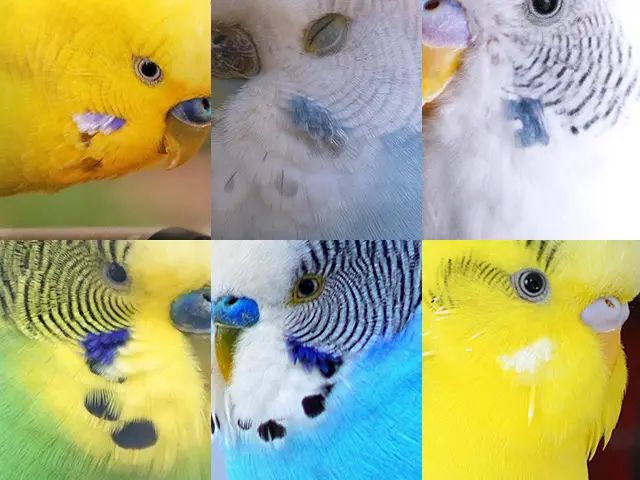
Throat Spots
Black or gray dots that line the throat of budgies like a necklace are called throat spots. Wild budgies often have six throat spots. On the other hand, budgies may have more than six throat spots due to mutations.
In addition, particular mutations can dilute, change or eliminate throat spots at certain levels. For example, the ino gene removes all throat spots, while the cinnamon gene adds a shade of brown to throat spots.
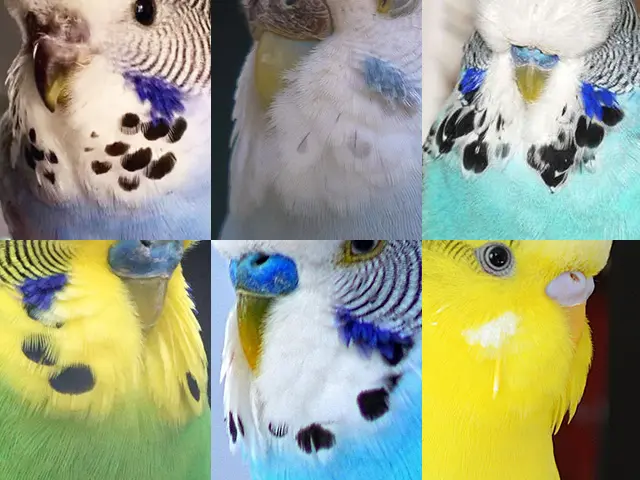
Ear Coverts
Ear coverts are the feathers that cover the budgie’s ears.
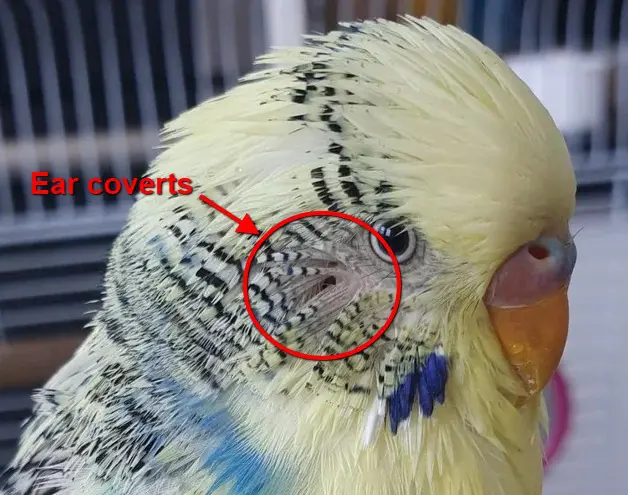
Mantle
The mantle area is located between the top of the wings and the back of the neck.
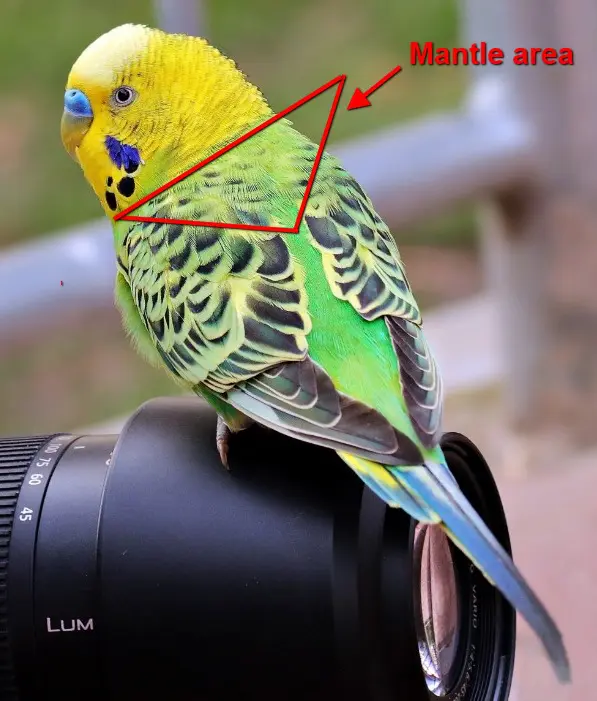
Mask
The mask area in budgies refers to the front side of the head. A budgie mask can be white or yellow.
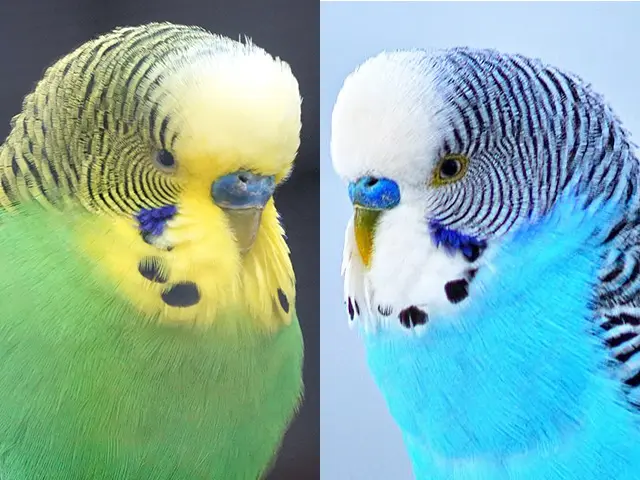
Rump
The rump is the area that is above the tail.
![Budgie Anatomy [All Body Parts]](https://www.petiska.com/wp-content/uploads/2022/06/budgie-anatomy-all-body-parts-1654614434.jpg)
Vent (Cloaca)
The vent is the bottom area of the budgie that is used for mating, egg-laying and throwing out all waste.
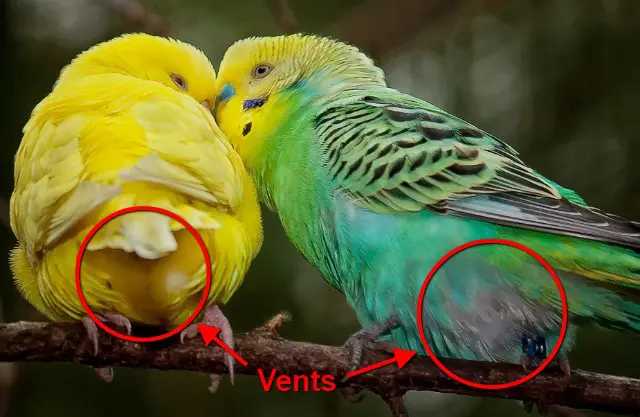
Eye Anatomy
The eye anatomy of budgies is similar to other bird species. Besides, some budgie species have unique eye colors that are caused by mutations such as full red and black.
Some budgies have lost or faded white iris rings due to mutations, such as double factor spangle, recessive pied, and dark eyed clear.
In addition, baby budgies have no iris rings until 4-6 months old.
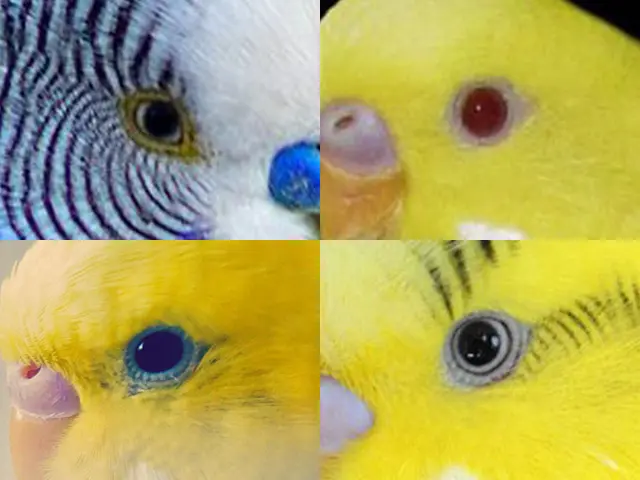
Foot And Leg Anatomy
Budgies are zygodactyl which means they have a total of four toes, with two toes extending forward and 2 toes rearward.
![Budgie Anatomy [All Body Parts]](https://www.petiska.com/wp-content/uploads/2022/06/budgie-anatomy-all-body-parts-1654521707.jpg)
Feathers
The feathers of budgies, like beaks and nails, are made of keratin. In addition, feathers have many features that make life easier for the budgerigar.
The feathers of budgies regulate body temperature, reduce heating, protect against physical damages, and provide a waterproof layer.
Budgie feathers also have UV-reflective properties for courtship and communication.
![Budgie Anatomy [All Body Parts]](https://www.petiska.com/wp-content/uploads/2022/06/budgie-anatomy-all-body-parts-1654539396.jpg)
![Budgie Anatomy [All Body Parts]](https://www.petiska.com/wp-content/uploads/2022/06/budgie-anatomy-all-body-parts-1654540498.jpg)
The parts of a feather of a budgie are listed as follows:
- Rachis: the central shaft that holds together the feather.
- Vane: flat segments on either side of the rachis.
- Hallow shaft, calamus (quill): the larger part of the rachis that is attached to the skin or bone of the budgie.
- Barb: each of the individual branches that are attached and extend laterally from the rachis.
- Barbules: each of the individual branches that are attached and extend laterally from the barbs.
- After feather: the lower barbs of a feather that are between downy barbs and barbs.
- Downy barbs: the barbs that aren’t hooked together at the base of the feather.
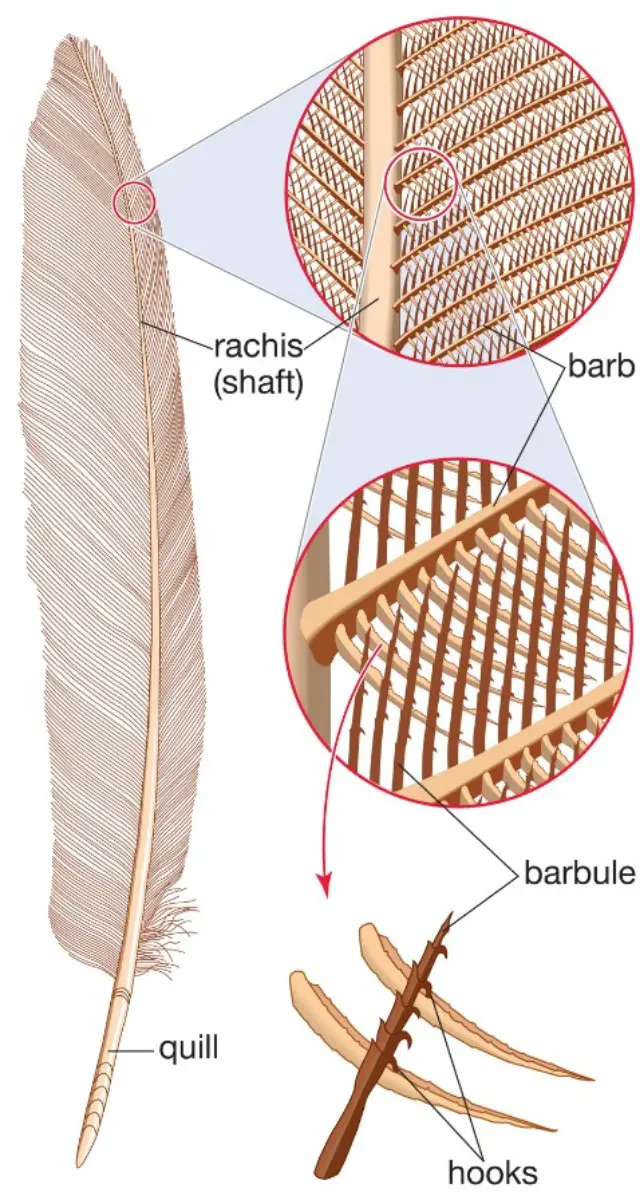
Wing Anatomy
The wings are one of the most important body parts of budgies. As flying creatures, budgies must use their wings to migrate and protect themselves from predators.
If a budgie’s wing is somehow injured and becomes unable to fly, the bird’s survival is nearly impossible.
The main wing feathers are connected directly to the bones with connective tissues. This feature is essential for easy flight control. Besides, it helps the wing feathers to join together with other parts of the body.
On the other hand, wing feathers that are not attached to the wing bones are attached to the skin and muscles.
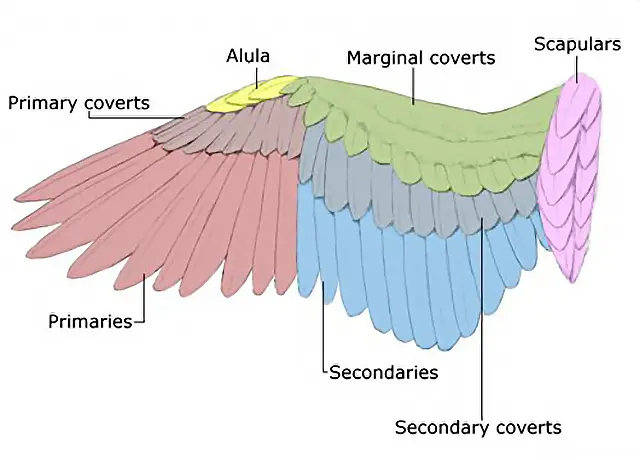
The primary and secondary feathers of budgies are connected with main wing bones. Besides, the primary covers, the secondary coverts, alula (bastard wings), marginal coverts, etc. are connected with bones, muscles, and skin.
Coverts (tectrices)
The budgie feathers also have covert feathers that cover other feathers, such as flight and tail feathers. They also have no role in flying ability.
The covert feathers have names that come from where they are placed, such as ear coverts.
Some feathers get their names from where they are found. For example, the feathers that cover the ears are called ear coverts.
Internal Anatomy (Internal Organs)
Budgies have organs that are unique to birds and not found in other animals such as cats and dogs.
Here is the list of internal organs of a budgie:
- Cloaca
- Coracoid
- Crop
- Duodenum
- Ear
- Gizzard
- Heart
- Kidney
- Liver
- Lung
- Oesophagus
- Pectoral muscles
- Proventriculus
- Ribs
- Small intestine
- Testis
- Tongue
- Trachea
- Ureter
- Vas deferens
- Vent
![Budgie Anatomy [All Body Parts]](https://www.petiska.com/wp-content/uploads/2022/06/budgie-anatomy-all-body-parts-1654598438.jpg)
Digestive Tract
The digestive tract (system) of a budgie is similar to the avian digestive system.
The digestive system of budgies consists of the following organs:
- Small intestine
- Bill
- Esophagus
- Crop
- Ceca
- Proventriculus
- Gizzard or ventriculus
- Gall bladder
- Large intestine
- Duodenum
- Pancreas
- Liver
- Cloaca
![Budgie Anatomy [All Body Parts]](https://www.petiska.com/wp-content/uploads/2022/06/budgie-anatomy-all-body-parts-1654600931.jpg)
Budgie’s heart is located in the chest area and at the place where the liver and lung touch each other. In addition, a budgie’s heart is located slightly to the right of the center of the body.
No, budgies don’t have teeth.
REFERENCES:
![Budgie Body Language With Photos & Videos [A FULL GUIDE]](https://www.petiska.com/wp-content/uploads/2022/08/budgie-body-language-with-photos-videos-a-full-guide-1659795239-400x300.jpg)
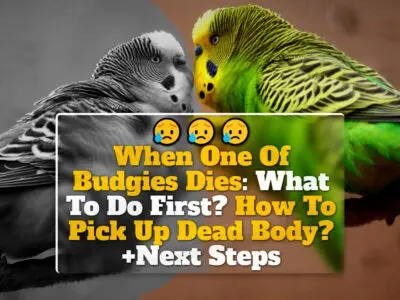
![Why Does My Budgie Have Red Eyes? [Naturally] +PHOTOS](https://www.petiska.com/wp-content/uploads/2022/08/why-does-my-budgie-have-red-eyes-naturally-photos-1660125153-400x300.jpg)
